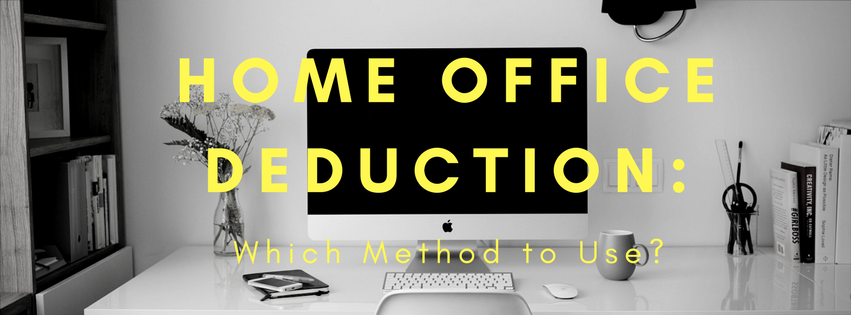Are you an entrepreneur using a home office? Are you aware there are two different ways to take the deduction for the use of your home for business purposes? Determining which is right for you is the topic of today’s blog.
The IRS has very specific guidelines as what constitutes the use of your home for business.
- Regular and exclusive use – this means you can’t use your laptop on the kitchen table, but must have a specific place used only for business purposes.
- Generally, your home must be the principal place of business, although there are exceptions if you have a separate location.
Since 2013, the IRS has had two different ways to calculate the home office deduction (originally there was just the actual expense method which is considered to be complicated). Since the simplified method has been introduced, it is much easier to determine the amount of the deduction. But which method should you use?
The actual expense method allows you to write off a proportional amount of expenses based on the percentage of the home used for the business. These indirect expenses generally include rent/mortgage, real estate taxes, utilities, and repairs and insurance. You can also deduct direct expenses such as painting or buying equipment for your space. The simplified method allows a write off of $5 for every square foot of your home office up to 300 square feet for a total deduction up to $1500.00.
With the actual expense method, you must keep copies of all paperwork proving actual costs to support the tax deduction taken, which is not required for the simplified method. However, by using the actual expense method, you may be able to deduct more than with the simplified option.
Take a look at an example to show the difference in the two methods. Let’s assume your home is 2500 square feet and you use 10% for your home office and that your indirect home expenses are $25,000 annually). Because you use 10% of your home for business, your deduction would be $2500.00 using the actual expense method. If taking the simplified deduction, it would be $1250 ($5 x 250). So you have a larger deduction by using the actual expense method.
Although you’d be able to have a larger tax deduction in this case, often organizing all the supporting documents and maintaining the records isn’t something business owners want to do. If that applies to you, the simplified deduction is the right method for you!
If you aren’t sure which method to use, see https://www.irs.gov/businesses/small-businesses-self-employed/home-office-deduction or contact your CPA and discuss your specific situation.
